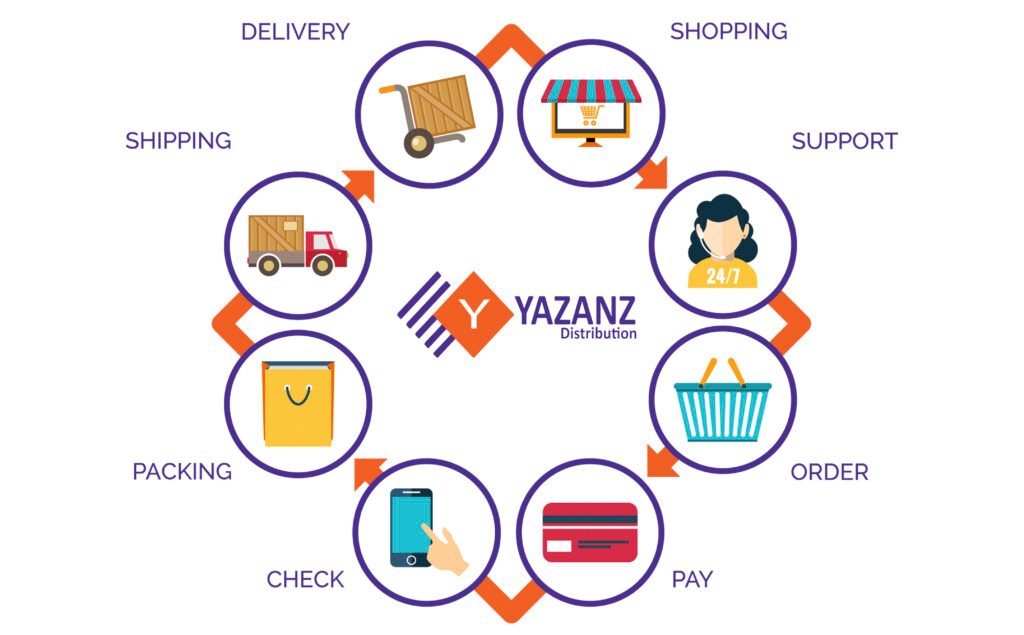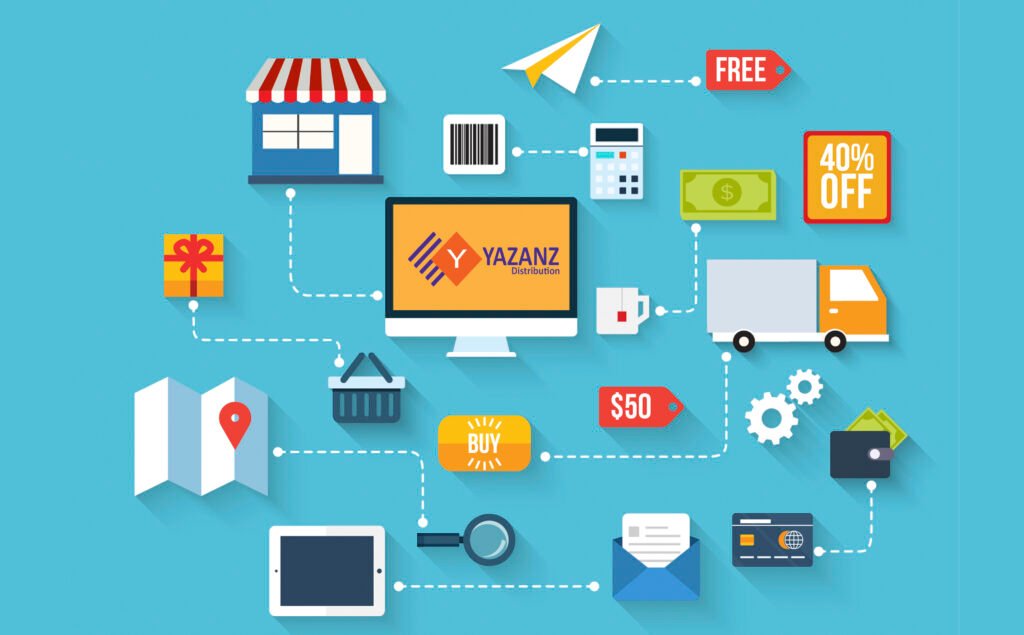TYPES & TIERS OF DISTRIBUTORS
Distributors play a pivotal role in the e-commerce world. They buy products from Brands in bulk and then sell them to different suppliers or consumers.
Distributors operate from inside the supply chain and perform specific functions within the distribution process. They ensure the product is safely transported from the Brand to the end consumer.

Types of Distributors:
Different distributors have their pros, cons, and strategies tailored to fulfill the demands of the digital market and audience.
The diverse ecosystem of distributors contributes significantly to the efficiency, accessibility, and diversity of the products available to consumers in the online retail landscape. Here are some of the common types of distributors.
1. Wholesalers:
Wholesalers tend to buy products in bulk and sell them to other retailers or businesses in smaller quantities. They sell products to other distributors instead of selling them directly to the consumer.
They benefit from low prices when they purchase stuff in bulk. Wholesalers have different online stores or marketplaces to reach retailers or end-consumers
2. Dropshippers:
Dropshipping is the process of listing and selling products from other stores on an online platform. A dropshipper does not need a physical location to store the products. They partner with the supplier or Brand and act as a bridge between the Brand and the customer.
When they receive an order, they forward the details to the supplier. It is now the supplier’s responsibility to fulfill the customer’s order. Dropshippers can only profit from the price difference between the retailer’s and the supplier’s prices.
3. Retailers/Resellers:
Resellers or retailers buy products in large quantities from Brands or wholesalers. Then, they sell those products on their online platforms. They offer a vast inventory of products to their customers. They handle marketing, sales, customer service, and logistics.
4. Brand’s Representatives:
Brands’ representatives work to promote the Brand’s business and promote them to new retailers.
They might be affiliated with an agency or work solo. They work like a PR agency, helping the business get positive feedback and attract more retailers. One agency can represent multiple Brands.
5. Exclusive Distributors:
Exclusive distributors have contracts with the Brands. They have official permission to sell the products in a specific market segment or region. They hold more control over the pricing, selling strategies, and marketing of the products they sell.
6. Value-Added Resellers (VARs):
Value-added Resellers tend to add some additional features to the products they are selling. They enhance them by customization, additional features, or services before they sell products to the end customer. These distributors usually focus on hardware, software, or technological developments.
7. Online Marketplaces:
Online marketplaces help sellers get more customers and reach a broader consumer base. It connects multiple sellers with a wide variety of customers.
The sellers may be retailers, Brands, or wholesalers. Online marketplaces manage transactions, facilitate transactions, and provide sellers with logistics support.
8. Affiliate Distributors:
Affiliate distributors support other sellers or Brands by promoting their products on their websites, blogs, or social media channels.
Their only source of income is the commission gained when people buy products from their unique affiliate links. They drive the audience to the Brands’ or retailers’ websites.
9. Specialized Niche Distributors:
These distributors only sell products related to a specific niche or category. They look for the most in-demand products and cater to the unique needs of their customers. They might specialize in fashion, beauty, health products, or electronics.

Tiers of Distribution:
In E-commerce, different tiers of distribution mean different levels and layers inside the supply chain. This is the path through which the products move from the Brand to the consumers. The tiers show us the various entities and their responsibilities in the distribution process. Some of the standard tiers in distribution are listed here.
1. First Tier/ Primary Distributors:
This tier indicates the direct contact between Brands, producers, and distributors or wholesalers. The Brands sell their products to the wholesalers in bulk. Then, it is the wholesalers’ responsibility to distribute the products to the secondary distributors or retailers.
2. Second Tier/ Secondary Distributors:
The secondary tier involves the movement of products from primary distributors or wholesalers to secondary distributors or retailers. Wholesalers divide large quantities of products into smaller portions and sell them to retailers. The retailers or secondary distributors then directly interact with the customers.
3. Third Tier/ Tertiary Distribution:
It is possible to introduce a third tier in some cases. They may exist in complex supply chains. This tier shows the movement of goods from regional retailers to small local retailers, or they directly interact with the end customers. It might involve localized or specialized distributors servicing specific regions.
Conclusion:
These tiers represent the flow of goods through different stages of the distribution network, with each level serving a specific purpose in ensuring products reach their intended destination. Brands usually operate at the first tier, while wholesalers, retailers, and specialized distributors operate at subsequent tiers, ultimately reaching the end consumers.
